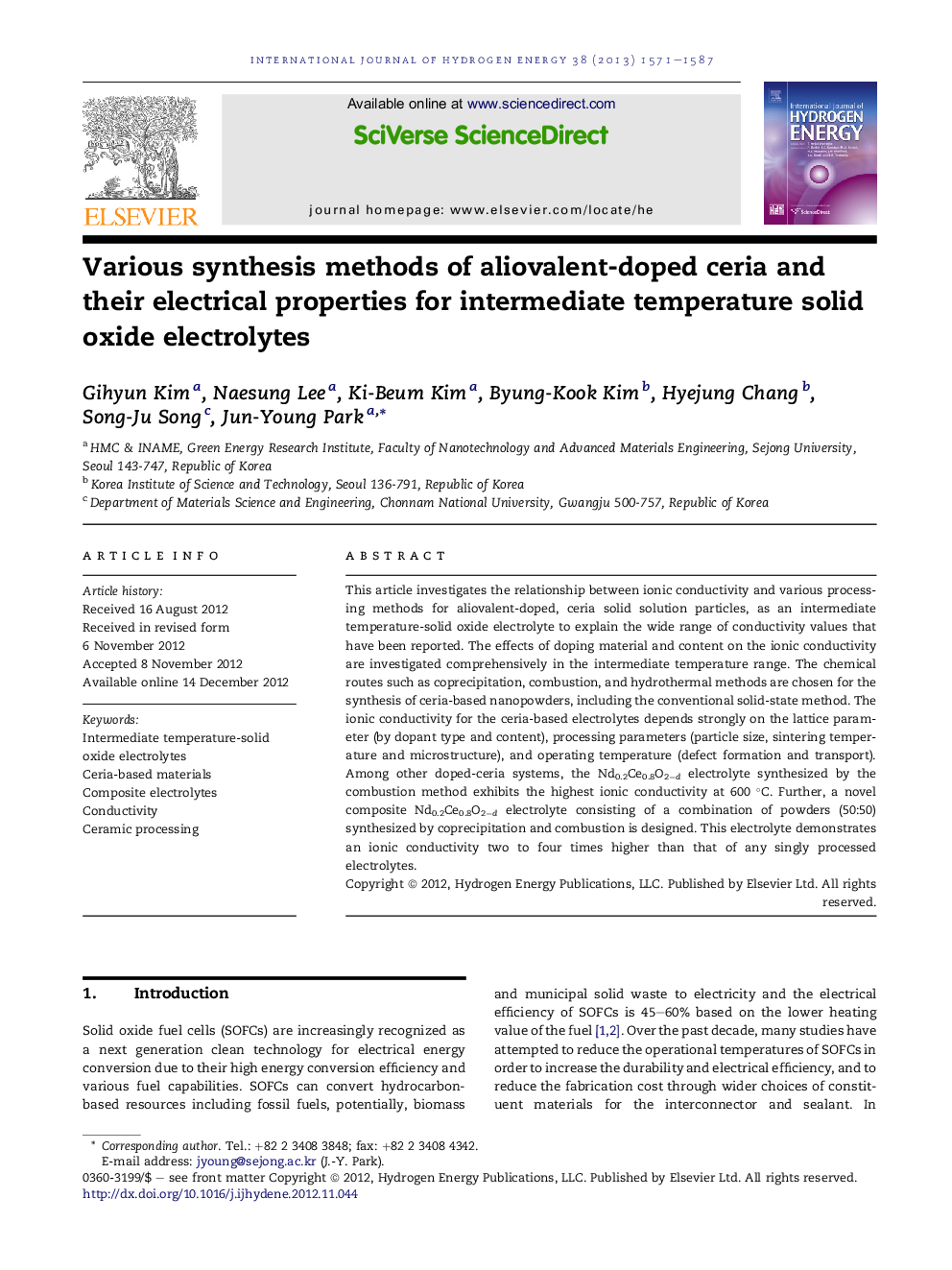| Article ID | Journal | Published Year | Pages | File Type |
|---|---|---|---|---|
| 1275944 | International Journal of Hydrogen Energy | 2013 | 17 Pages |
This article investigates the relationship between ionic conductivity and various processing methods for aliovalent-doped, ceria solid solution particles, as an intermediate temperature-solid oxide electrolyte to explain the wide range of conductivity values that have been reported. The effects of doping material and content on the ionic conductivity are investigated comprehensively in the intermediate temperature range. The chemical routes such as coprecipitation, combustion, and hydrothermal methods are chosen for the synthesis of ceria-based nanopowders, including the conventional solid-state method. The ionic conductivity for the ceria-based electrolytes depends strongly on the lattice parameter (by dopant type and content), processing parameters (particle size, sintering temperature and microstructure), and operating temperature (defect formation and transport). Among other doped-ceria systems, the Nd0.2Ce0.8O2−d electrolyte synthesized by the combustion method exhibits the highest ionic conductivity at 600 °C. Further, a novel composite Nd0.2Ce0.8O2−d electrolyte consisting of a combination of powders (50:50) synthesized by coprecipitation and combustion is designed. This electrolyte demonstrates an ionic conductivity two to four times higher than that of any singly processed electrolytes.
► This investigates relationship between conductivity and processing for ceria. ► Effects of doping material and content on the conductivity are investigated. ► Nd0.2Ce0.8O2−d by combustion method exhibits the highest conductivity at 600 °C. ► Composite ceria consisting of coprecipitation and combustion powders is designed. ► Conductivity of composite ceria is 2.5–4 times higher than singly processed ceria.
